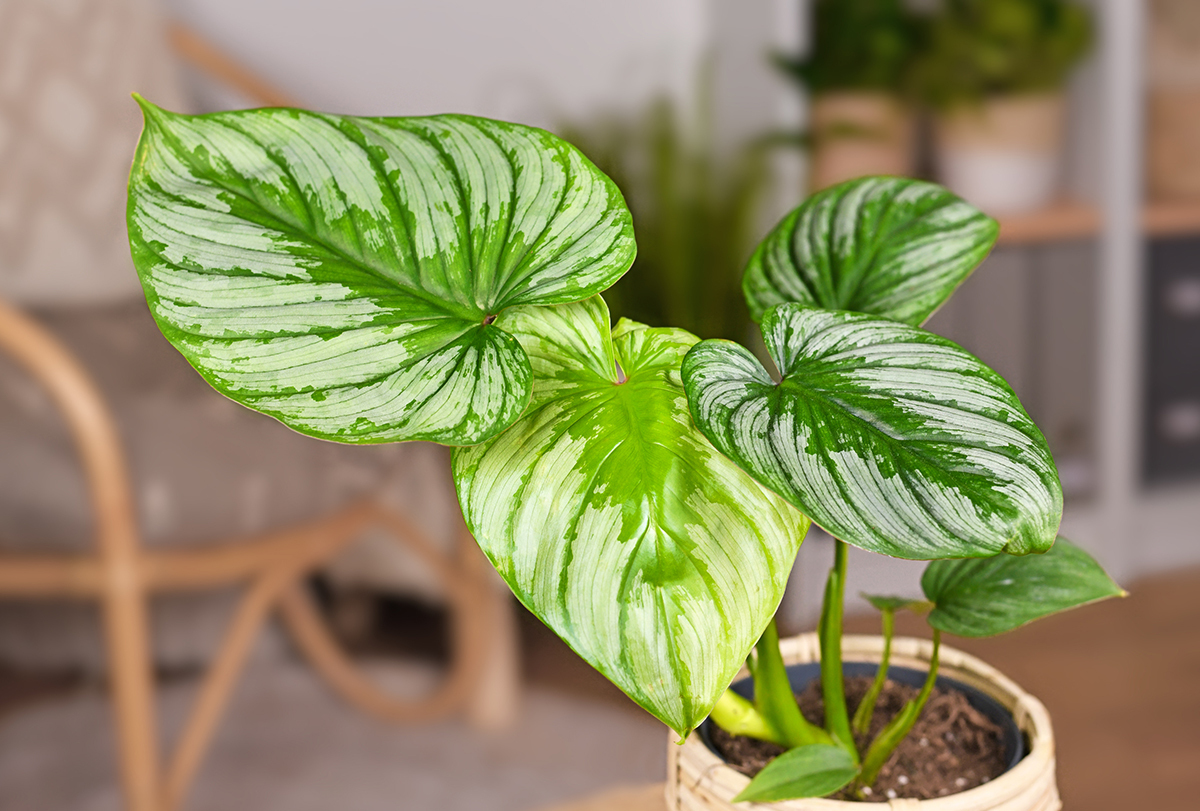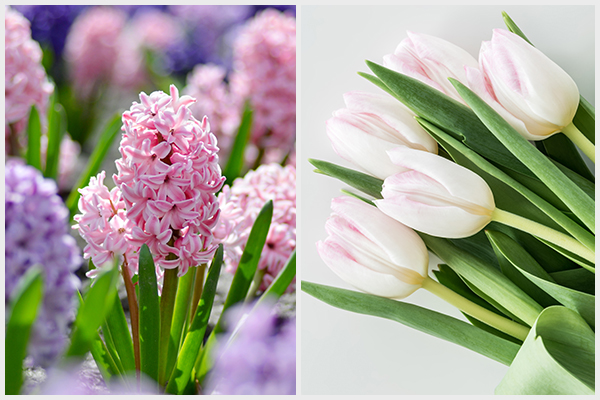In this article:
House plants are a common addition to interior décor. They not only add to the beauty of the room, but some of them double up as air purifiers if used judiciously. However, it is important to research a plant before placing it indoors as some of them can be toxic to children and pets. (1)

Some plants are toxic when ingested, while others can cause allergic reactions when the stem or leaves of the plant come in contact with the skin. Some of the toxins include ricin of castor beans, glycosides of oleander, grayanotoxins of rhododendrons, and oxalates of dumb canes (Dieffenbachia). (1)
This article describes some of the dangerous indoor houseplants, the symptoms of poisoning caused by them, and commonly available safer alternatives that can be bought at any plant nursery.
House Plants That Are Poisonous
Refrain from growing these poisonous and harmful indoor houseplants.
1. Dieffenbachia
Dieffenbachia plants, also called dumb canes or leopard lilies, belong to the family Araceae. They have large striated leaves that make them much sought after for home decoration.
However, these are dangerous plants that contain toxic needle-shaped calcium oxalate crystals in their leaves, which function to protect them against animals that may want to eat the leaves.
As indoor plants, these crystals cause local inflammation, irritation, and tissue damage when rubbed against the skin or ingested. (2)
A safe alternative can be a variegated baby rubber plant, prayer plant, or cast iron plant. (3)
2. Philodendron
Philodendrons are easy to grow and require very little upkeep; hence, they are very popular house plants. Native to the Amazonian rainforest or forests of South America, these plants also belong to the family Aracea. (4)
But they are potentially dangerous since they also have needle oxalate crystals called raphites.
The symptoms of poisoning upon accidental rubbing on the skin or ingestion are very much similar to that of Dieffenbachia poisoning.
In humans, the symptoms of oxalate poisoning can be easily treated. However, in pets and other animals, the poisoning can lead to serious manifestations such as increased salivation, swelling of the tongue, vomiting, breathing problems, and, in extreme cases, cardiac arrest. (5)
A safe alternative can be a variegated baby rubber plant, prayer plant, or spider plant. (3)
3. Caladium
Caladiums are also called “angel’s wings” on account of their huge attractive leaves streaked with purple. About 95% of caladium tubers are now produced in Florida.
The toxicity of this plant is also due to calcium oxalate crystals, which if ingested by pets and children can lead to gastrointestinal upset, nausea, and vomiting. In severe cases, it can lead to coma and death. (6)
A safe alternative can be a variegated baby rubber plant, prayer plant, or cast iron plant. (3)

4. Oleander
Oleander (Nerium oleander) is an evergreen flowering shrub that produces beautiful red, white, pink, or purple flowers. It is commonly called soland, rosebay, rose laurel, and kaner and is native to Northern Africa. (7)
However, it is an extremely toxic plant and the toxicity is due to compounds called glycosides, which are present in all parts of the plant.
Symptoms caused by oleander ingestion range from gastrointestinal problems to blurred vision and abnormal heartbeats. Oleander poisoning is a medical emergency and should be treated by a professional. (8)
An alternative to oleander is African violet.
5. Datura
Also known as angel’s trumpet, apple of Peru, and devil’s Apple, datura is a small shrub and has a foliage of dark-green pointed leaves with large tubular flowers that are either white or purple.
Datura has historic significance and was used in medieval Europe for witchcraft as well as in India to smoke and for rituals. (9)
All parts of the plant, especially the seeds, are poisonous. The toxicity is due to the presence of a class of compounds called alkaloids, which harm the nervous system and interfere with the transmission of nerve signals.
Datura poisoning can cause dryness of mouth, slurred speech, dilated pupils, drunken gait, abnormal heartbeat, and, in extreme cases, death. Datura poisoning is a medical emergency requiring professional help. (10)
6. Daffodil
Daffodils are bright, fragrant flowers that bloom in spring. They are found in the meadows of European woodlands and forests.
But they are dangerous and poisonous since they contain a toxic alkaloid called lycorine. Ingestion of the daffodil bulb, which can be mistaken for an onion bulb, is pretty common and leads to poisoning. The symptoms of daffodil poisoning are nausea, vomiting, abdominal pain, and diarrhea. (11)
A safe alternative is African violet.

7. Pothos
Pothos has many varieties, but the one called devil’s ivy is an attractive plant that grows as a vine trailing over the edges of the container. It is a tropical plant that grows well in indirect light. Since it doesn’t require much attention, it is sought after as an ornamental plant.
But it is potentially dangerous since it contains calcium oxalate crystals very much like Dieffenbachia. The symptoms of poisoning by pothos are also very much similar to those of philodendron and Dieffenbachia poisoning.
A safe alternative to devil’s ivy is Swedish ivy. (12)
8. Peace lily
Peace lily (spathe) is also known as ‘Mauna Loa’ and is a tropical plant. This is another beautiful but dangerous house plant.
The danger is due to the presence of calcium oxalate crystals in the plant. These crystals are insoluble and can cause irritation of the oral cavity if ingested.
The clinical signs seen upon ingestion of peace lily include excessive salivation, drooling, difficulty swallowing, and vomiting. (13)
9. Hyacinth
Hyacinths are bulbous plants that produce violet, pink, or white flowers. They are native to Brazil but also have been found in parts of Africa, Australia, India, and North America. (14)
Like daffodils, hyacinths also contain lycorine; they also contain calcium oxalate. The presence of these two chemicals makes them poisonous.
A safe alternative to hyacinths is pot marigold. (13)

10. Tulips
Tulips are attractive spring-blooming flowers, and they come in a variety of colors including white, yellow-orange, red, blue, purple, violet, and pink, making them attractive for use in landscaping and as indoor plants.
They originated on the western outcropping of the Himalayas, but some species are found in Turkey, America, and Crete. (15) However, they are toxic due to the presence of a chemical called tulipan A, which can cause contact dermatitis, an allergic reaction. (16)
Most-Asked Questions
What should I remember to avoid getting poisoned by houseplants?

Always wash your hands after handling the plant, and keep it out of the reach of the children and pets.
In case of accidental poisoning by a house plant, what should I do?
In most cases, the symptoms can be treated and full recovery is possible.
In the case of accidental ingestion, the mouth should be washed with a cold wet cloth; the patient should be given milk for drinking, and a poison center should be contacted. The hands of the patient should be washed thoroughly.
Final Word
Indoor plants, no doubt, enhance the beauty of the house. But care should be taken to avoid their poisonous effects. If you are able to find safe alternatives to dangerous indoor plants, opt for them.
- Was this article helpful?
- YES, THANKS!NOT REALLY


